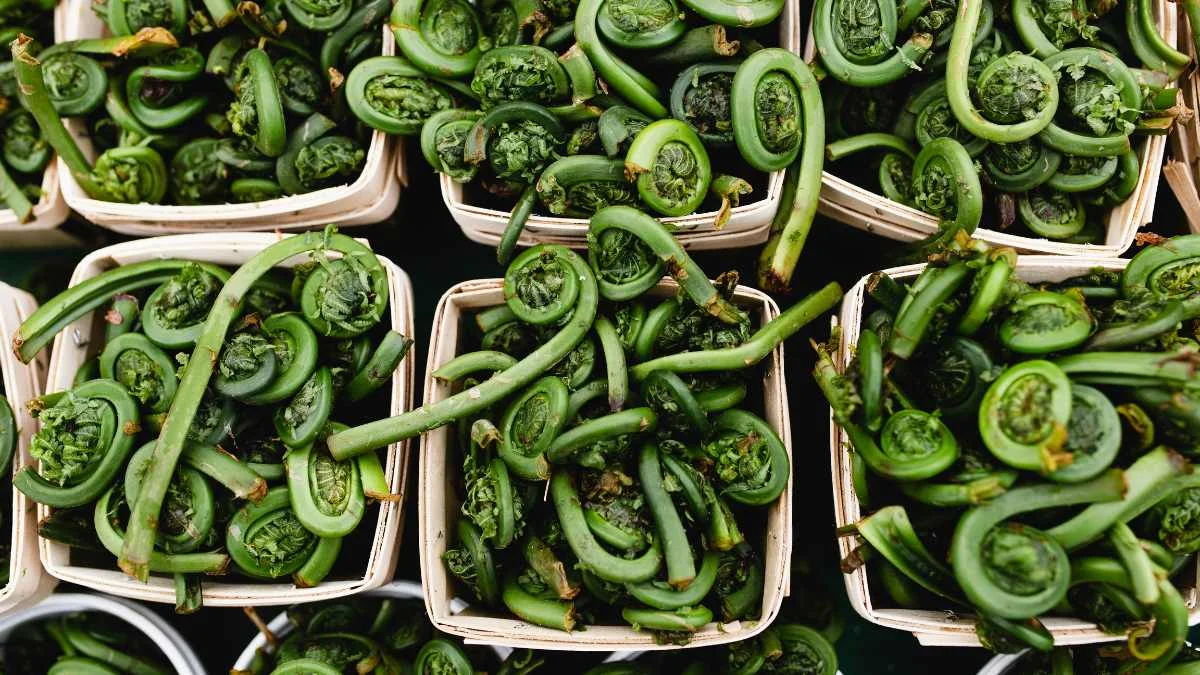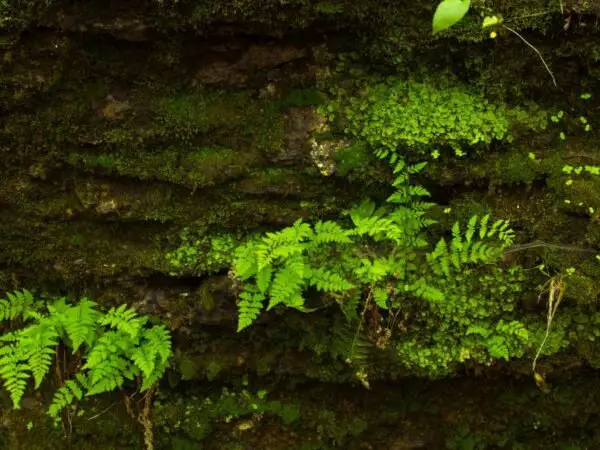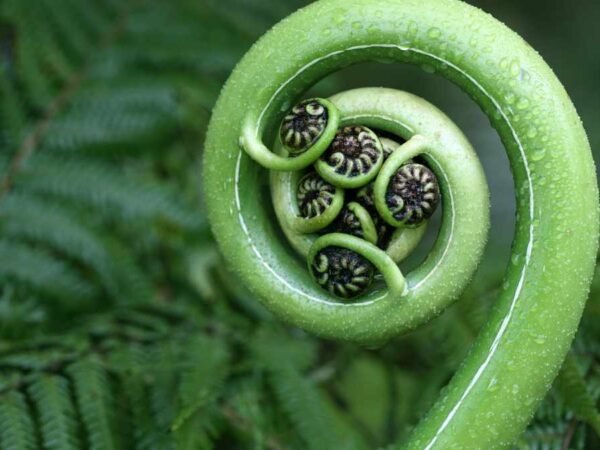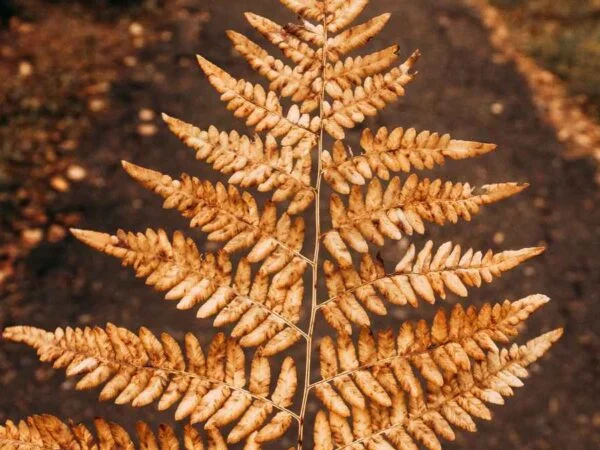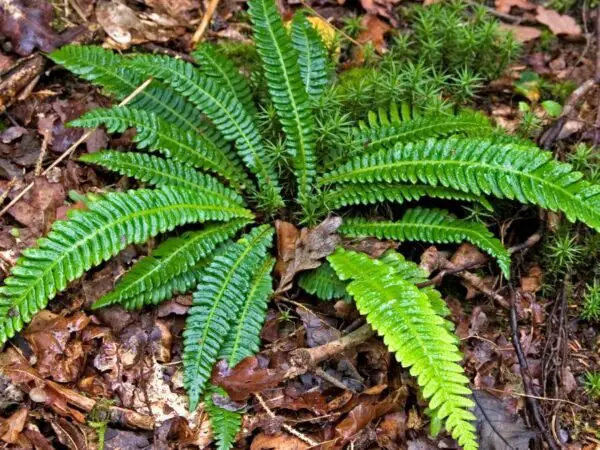Can you eat fiddlehead ferns? Absolutely! If you're curious about incorporating these unique ferns into your eating plant, you're in the right place.
Fiddlehead ferns are indeed edible and are considered a delicacy in many cuisines around the world. However, it's crucial to properly prepare them before consumption to remove any bitterness and potential toxins. These tightly coiled young fronds of certain fern species are typically harvested in the spring and can be enjoyed sautéed, steamed, or even pickled. Rich in antioxidants, vitamins, and minerals, fiddlehead ferns offer a distinct earthy flavor and crisp texture that pairs well with various dishes. Remember to only harvest fiddleheads from trusted sources and never consume them raw.
For more insights on the culinary uses, nutritional benefits, and safety precautions associated with fiddlehead ferns, delve deeper into our comprehensive guide. Explore innovative recipes, learn about their cultural significance, and discover fascinating facts about these fascinating fern delicacies. Whether you're a seasoned forager or a curious food enthusiast, there's always more to uncover about the intriguing world of fiddlehead ferns.
Key Takeaways
- Always ensure fiddlehead ferns are thoroughly cleaned in a water bath with vinegar, boiled, and cooked to avoid potential health risks associated with consumption.
- Follow food safety guidelines when handling and preparing fiddlehead ferns to prevent foodborne illnesses.
- Experiment with different cooking methods such as sautéing, steaming, boiling, or adding them to salads for diverse culinary experiences.
- Plan ahead by blanching or freezing fiddlehead ferns for future use, maintaining their freshness and flavor.
- Government safety measures provide valuable information on harvesting and consuming fiddlehead ferns safely.
- Explore additional resources to deepen your knowledge of fiddlehead ferns and discover new recipes.
Fiddlehead Basics
Identifying Fiddleheads
Fiddleheads are identified by their tightly coiled, bright green appearance. They should have a smooth texture like a fern without any signs of wilting. Look for fiddleheads with a distinct "U" shape for the best quality.
Seasonal Availability
- Fresh fiddlehead ferns are only available in the spring, making them a seasonal delicacy.
- Frozen fiddleheads can be found throughout the year, providing a convenient option.
- Availability may vary depending on your geographical location, so check local markets.
Nutritional Highlights
Fiddleheads, ferns, offer a range of health benefits, being a good source of antioxidants and fiber. They also contain essential vitamins A and C, along with omega-3 fatty acids. With low calories and fat content, they make a healthy addition to meals.
Health Risks
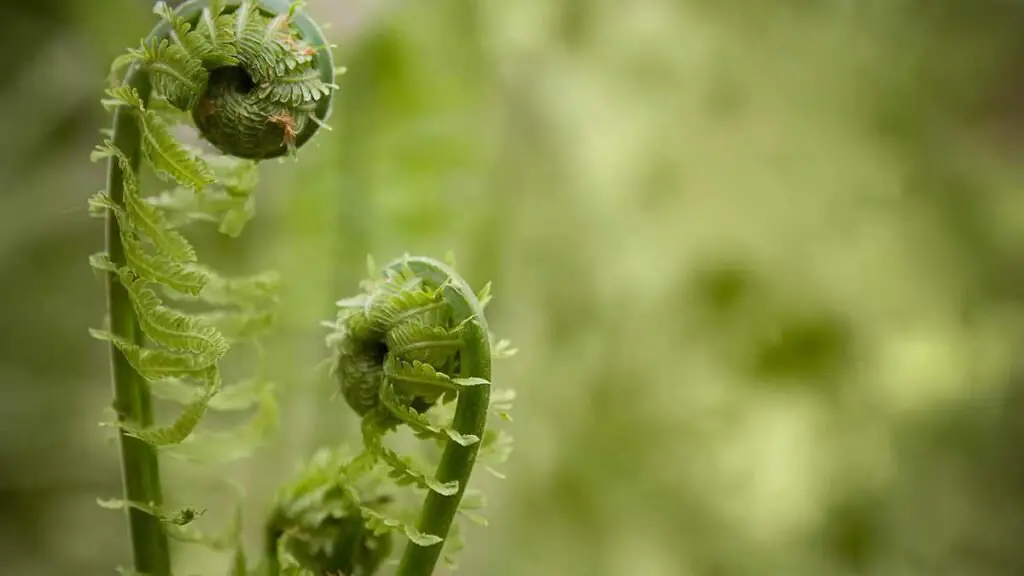
Potential Concerns
Fiddlehead ferns have been associated with foodborne illness outbreaks when consumed raw or undercooked. Other ferns like foxglove and bracken contain toxins that can be harmful if ingested. To avoid health risks, it is crucial to properly cook fiddleheads, a type of fern, before eating them.
When fiddleheads, a type of fern, are not cooked thoroughly, they may lead to symptoms such as nausea, vomiting, and diarrhea due to potential contaminants. Certain studies have suggested a possible link between the consumption of fiddleheads, a type of fern, and an increased risk of bladder cancer.
Risk Mitigation
To reduce the risk of illness, it is essential to ensure that fiddleheads, a type of fern, are thoroughly cooked before consumption. Following recommended cleaning and cooking techniques can help eliminate any harmful bacteria or toxins present in the ferns. For those who enjoy foraging for fiddleheads, a type of fern, in the wild, it is important to be cautious and knowledgeable about safe harvesting practices.
- Pros:
- Fiddlehead ferns are rich in antioxidants and vitamins.
- They add a unique flavor and texture to dishes.
- Cons:
- Improper preparation can lead to food poisoning.
- Overconsumption may result in adverse health effects.
- Thoroughly cook fiddleheads before consuming them.
- Follow recommended cleaning and cooking techniques to ensure safety.
- Exercise caution when foraging for fiddleheads in their natural habitat.
Food Safety Essentials
Selecting Quality
When purchasing fiddlehead ferns, look for ones that show no signs of browning or wilting to ensure freshness. Opt for fiddleheads with tightly coiled tops as they indicate young, tender ferns. Avoid any fiddleheads that emit a strong or unpleasant odor, which could signify spoilage.
Proper Storage
To maintain the quality of fresh fiddleheads, store them in the refrigerator and consume within one week of purchase. For long-term storage, freezing is recommended. Use airtight containers or freezer bags to prevent freezer burn and preserve their flavor.
Cleaning Techniques
Step-by-Step Guide
To begin, identify fresh fiddlehead ferns by their vibrant green color and tightly coiled heads. Next, clean them thoroughly to remove any dirt or debris. Submerge the fiddleheads in a bowl of water and add a splash of white vinegar to help eliminate any remaining impurities. Gently agitate the water to dislodge dirt, ensuring all surfaces are cleaned properly.
Once clean, rinse the fiddleheads under cold running water to remove any vinegar residue and trapped debris. Look out for any hidden air bubbles within the coils as they can cause bitterness when cooked. After cleaning, proceed to cook the fiddleheads following your preferred recipe while ensuring they are cooked through for safety.
After enjoying your dish, make sure to store any leftovers promptly in an airtight container in the refrigerator. Alternatively, you can also freeze cooked fiddleheads for future consumption. When reheating, ensure they are heated thoroughly before serving again.
Indulge in the unique taste of fiddlehead ferns by incorporating them into various dishes such as refreshing salads, flavorful stir-fries, or delectable pasta recipes. Experiment with different cooking methods and flavor combinations to discover your favorite way of enjoying these seasonal delicacies.
Essential Tools
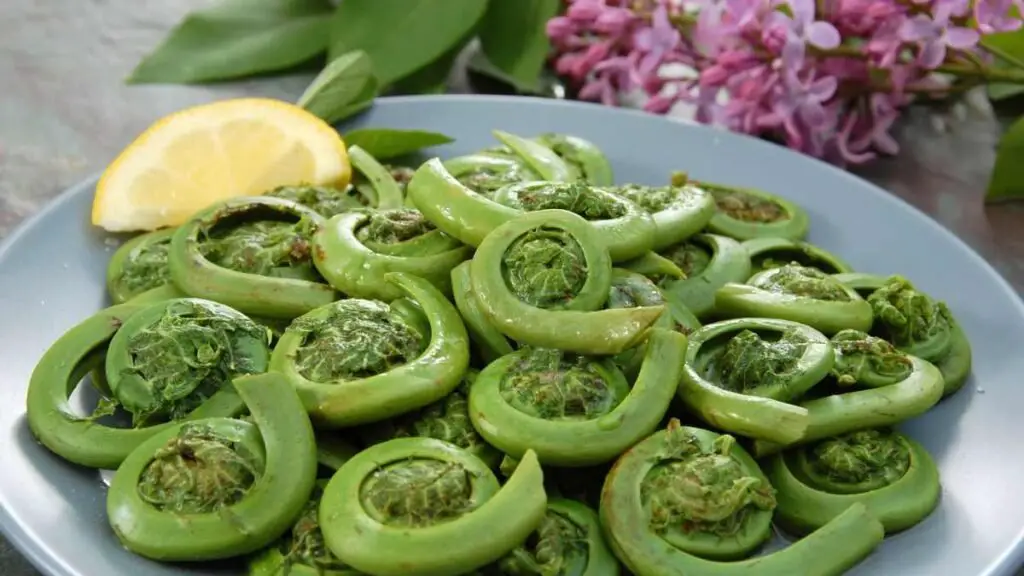
When preparing fiddlehead ferns, it is essential to have the right tools on hand for efficient cleaning and cooking processes. Begin by using a sharp knife to trim off any brown ends or tough stems from the fiddleheads. This ensures that only the tender parts are used in your dishes.
For washing the fiddleheads thoroughly, utilize a colander to rinse them under cold running water effectively. The colander helps drain excess water while allowing you to inspect each piece for cleanliness before cooking.
When it comes to cooking fiddleheads, have a boiling pot or steamer ready for efficient preparation. Boiling or steaming fiddleheads helps retain their crisp texture and vibrant color while ensuring they are cooked evenly throughout.
Cooking Methods
Boiling Fiddleheads
Boil fiddleheads in water for a minimum of 15 minutes to ensure they are thoroughly cooked. Make sure the fiddleheads are completely submerged in the boiling water to cook evenly. After boiling, drain and rinse the fiddleheads to eliminate any potential bitterness.
Sauteing Fiddleheads
Oil Choices
- Consider using olive oil or butter when sautéing fiddleheads for a rich flavor.
- Coconut oil can provide a unique taste profile to your cooked fiddleheads, adding a tropical twist.
- Avoid oils with low smoke points for high-heat cooking as they may burn easily.
Cooking Times
Steam the fiddleheads for around 10 to 12 minutes until they reach the desired tenderness. It's crucial to adjust the cooking times based on how firm or soft you prefer them. Be cautious not to overcook the fiddleheads as it can lead to a mushy texture.
Advanced Preparation
Freezing Process
To freeze fiddlehead ferns, start by cleaning them thoroughly to remove any dirt or debris. Next, blanch the fiddleheads by boiling them briefly and then plunging them into ice water to stop the cooking process. This step helps preserve their color and texture. Afterwards, pack the blanched fiddleheads in freezer-safe containers, ensuring they are sealed tightly to prevent freezer burn. Finally, don't forget to label and date the containers for easy identification in the future.
Preserving Techniques
When it comes to preserving fiddlehead ferns, it's important to note that pressure canning is not recommended due to safety concerns. Instead, consider pickling or fermenting methods as alternative preservation techniques. Pickling involves soaking the fiddleheads in a brine solution, while fermenting utilizes natural bacteria to preserve the ferns. Whichever method you choose, make sure to follow approved preservation techniques to ensure food safety and quality.
Taste and Serving Suggestions
Flavor Profile
Fiddleheads boast a delicate, grassy flavor that sets them apart from other greens. The taste is unique and refreshing. Pairing them with citrusy dressings can elevate their flavor profile, adding a zesty kick. For those looking to experiment, try incorporating herbs like dill or thyme to bring out different dimensions of the fiddleheads' taste.
Pairing Ideas
- Combine fiddleheads with seafood such as salmon or shrimp for a delightful surf-and-turf experience.
- Incorporate fiddleheads into pasta dishes or omelets for a creative twist on traditional recipes.
- Pairing fiddleheads with fresh spring vegetables creates a vibrant side dish, perfect for any meal setting.
Government Safety Measures
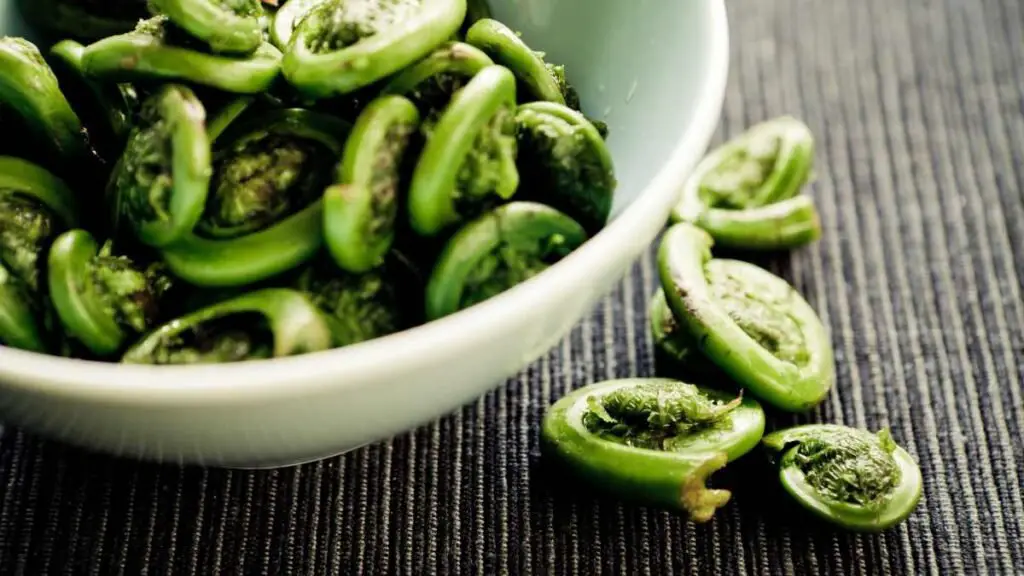
Regulations Overview
Health Canada sets safety standards for fiddlehead consumption. It is crucial to adhere to these guidelines to ensure food safety and prevent any health risks. Stay updated on any new regulations or advisories issued by the government regarding fiddleheads.
Consumer Protection
When buying fiddleheads, opt for reputable sources to guarantee their quality and freshness. This step helps in reducing the risk of contamination or other issues related to the consumption of fiddlehead ferns. If you experience any adverse reactions or illnesses after consuming fiddleheads, promptly report them to the relevant authorities. Stay vigilant about any recalls or warnings concerning fiddleheads to protect yourself and others from potential harm.
Additional Resources
For Further Reading
Fiddlehead ferns are a unique and nutritious delicacy that many people enjoy. If you want to delve deeper into the world of fiddleheads, there are several resources available to expand your knowledge. Explore additional sources that provide insights into fiddleheads and food safety measures. Discover how to incorporate these delectable ferns into your diet by learning more about their nutritional benefits. Uncover various recipes and cooking techniques that can elevate your culinary experience with fiddlehead ferns.
Contact Points
When it comes to ensuring the safety of consuming fiddlehead ferns, it's essential to reach out to the right authorities for guidance. Health Canada is a valuable resource for specific inquiries related to fiddleheads. Local health authorities can also provide information on how to handle and prepare fiddleheads safely. If you have any concerns or doubts about consuming fiddlehead ferns, consulting with healthcare professionals is advisable to address any potential risks or issues effectively.
Final Remarks
As you navigate the world of fiddlehead ferns, remember the importance of proper cleaning and cooking techniques to ensure a safe culinary experience. Understanding the potential health risks associated with consuming undercooked or contaminated fiddleheads is crucial for your well-being. By following government safety measures and utilizing reliable resources, you can confidently enjoy these unique delicacies while prioritizing your health.
Explore the diverse ways to incorporate fiddlehead ferns into your meals and savor their distinctive taste. Embrace the adventure of trying new recipes and experimenting with different flavors to elevate your culinary creations. Stay informed, stay safe, and savor the flavors of nature responsibly.
Frequently Asked Questions
Can fiddlehead ferns be eaten raw?
Fiddlehead ferns should not be eaten raw as they may contain toxins that can cause food poisoning. It is recommended to cook fiddlehead ferns thoroughly before consumption to ensure they are safe to eat.
How should fiddlehead ferns be cleaned before cooking?
To clean fiddlehead ferns, rinse them under cold water and remove any dirt or debris by gently rubbing them with your fingers. Trim the ends of the stems and discard any discolored or wilted parts before cooking.
Are there any health risks associated with eating fiddlehead ferns?
Consuming undercooked or raw fiddlehead ferns can pose health risks due to potential toxins present in the plant. To avoid foodborne illness, it is essential to cook fiddleheads properly and follow recommended guidelines for their preparation.
What are some common cooking methods for preparing fiddlehead ferns?
Popular cooking methods for fiddlehead ferns include sautéing, steaming, boiling, or stir-frying. These methods help retain the ferns' unique flavor and texture while ensuring they are cooked thoroughly and safe for consumption.
Are there specific government safety measures related to harvesting and consuming fiddlehead ferns?
Government safety measures may vary by region, but it is crucial to source fiddlehead ferns from reputable sources, ensure proper cleaning and cooking techniques are followed, and stay informed about any local advisories regarding the consumption of wild-harvested plants like fiddleheads.
Image Source: Paid image from CANVA

